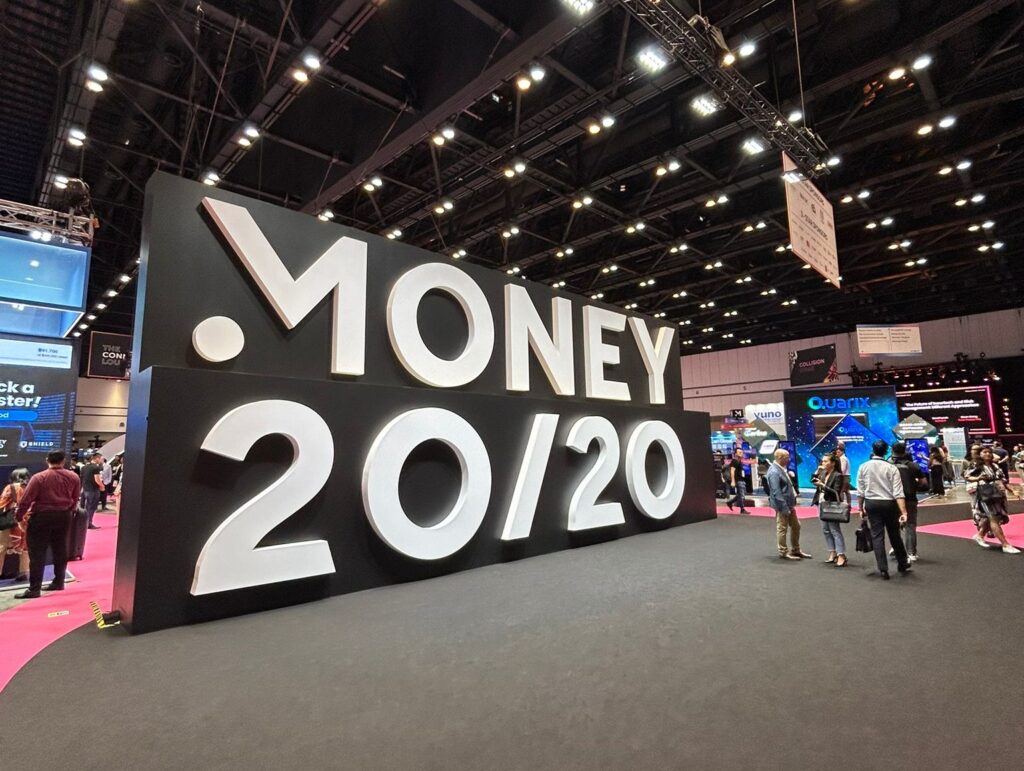“But Does it Apply to B2B?” Assessing B2C marketing approaches in a B2B world
Can B2C marketing tactics work in B2B?
Can B2C marketing tactics work in B2B?

By Alex Knight, Financial Services
This blog outlines a 12-step guide to writing an effective research report, focusing on survey-based methodologies. It covers three core phases that take you from concept to launch, providing practical tips and insights to help businesses produce reports that will boost brand awareness and support lead generation.
Building a brand doesn’t happen overnight. Unless you have an explosive stunt in your back pocket, it requires a clever and consistent communications programme across years.
However, there is a way to give your brand a perfect platform for success: a research-based report. Not only does a report provide you with original data and insights that can fuel marketing activity for months, but they’re usually more meaningful than that.
Reports take a deep dive into a topic that a business wants to be associated with and will often draw attention to the very challenges that a business is trying to solve. As such, the launch of a report is usually a major milestone – and one which shapes the future of the brand.
There are many ways to do research and I would encourage you to explore what options might work best for what you have in mind, whether it’s digging into publicly available data sets, aggregating recent news and case studies, examining existing literature – or better yet – using data from your own business. That said, the default for many is a survey, which is a fast and reliable way to gather some useful data.
Whichever methodology you decide to go with, creating a research report can be a large and intimidating project. Fortunately, this article breaks down the process into 12 key steps (specific to a survey-based report) that will take you from idea to launch, with some top tips along the way.
You probably already have some rough ideas, but it’s important to start by working out the story you want to tell and the topics you want to investigate. Ideally, what do you want the research to uncover? Who do you want to read it? Are you looking for a punchy 1,000 words or something more in-depth at 10,000? Key things to think about here are budgets, word count, and scope for the survey, including job titles, sectors, and regions.
From experience, we know that reports require tight project management and a clear step-by-step process. Before beginning, you should assign a project manager and develop a timeline with clear ownership of actions and deadlines. The length of the project will depend on the research, but a shorter report will take a couple of months whereas a longer piece of research can take six months or more.
Here you need to balance budget with credibility. For B2B research, you need a minimum of 100 respondents whereas it’s 1,000 for consumers for the research to be seen as credible – and therefore newsworthy in the eyes of the media. However, the higher the number of respondents, the more credible. It is possible to run the survey yourself through the likes of SurveyMonkey, but it can be a real challenge to gain a decent number of responses.
When it comes to research agencies, as tempting as it is to simply go for cheapest option, they all have pros and cons, with some providing much less consultancy throughout the process. As part of those conversations, don’t forget to ask how the data will be presented back to you. Is it on Excel or do you get access to an interactive platform?
At this point, you should build on the initial ideas by doing extensive desk research into the areas you are investigating. What does your audience care about? What are the biggest news stories? It’s important to do some digging to see if there is any rival research out there, both for inspiration and to avoid creating something similar. This all informs the direction of the research.
If possible, it is well worth speaking to a few journalists to ask what research they would like to see. That usually gives a good steer. After that, you should have calls with your subject matter experts to catch their thoughts on what you have found and to hear what they think is missing.
This is arguably the most important step. The questions can really make or break the report, and require careful thought to provide you with data people will care about. It can be helpful to work backwards by thinking about some of the headlines you want and writing the question to deliver that outcome.
Try not to overcomplicate questions. Simple and short questions will provide clearer cut data. In addition, it’s important to make the most out of screening questions – think beyond the standard gender, age, job role, sector, and region. What else could be useful to find out that is specific to your sector? On a similar note, you can extract extra value by adding some questions at the end of the survey that can help inform your brand or business strategy – have they heard of you? What does your audience want from suppliers like you?
This will usually take a few days but can take over a week depending on the panel. Use this time to put a plan in place for when the data is due back. Who’s doing the analysis? Can they block out a couple of days to dive into it? It’s also worth being very clear with the research agency how you want the data presented.
This is where you take a deep dive into the data, plucking out key stats and looking at how the different demographics compare to each other. There’s bound to be a heap of exciting stories in there so don’t just scratch the surface here. The best stories are often buried a little.
Throughout this process, use the research agency to help you to come up new stats by working out averages, creating net totals, or combining responses that can be grouped together. That will help create some eye-catching statistics. It can also work well to create a framework / structure of the report at this point.
While the data is the foundation, the best research reports have insights and commentary alongside the data so this is the time to have some longer discussions with your spokespeople to hear their thoughts on the findings. What is surprising? How do they explain it?
If possible, try to have a mix of voices and pull in spokespeople from relevant companies or organisations. Industry bodies and trade associations are perfect if you can bring them in.
Ahead of all interviews, you should circulate a document containing what you’re looking to discuss (and mock questions). That said, you don’t want the spokesperson to be over-prepared as it tends to be more robotic. You’re looking to have a relatively free-flowing conversation as this tends to generate the best insights and lead to some more personal quotes and anecdotes.
This is where you finally pull all this information together. Start by creating a structure, with all the key points and data in an order that makes most sense. It’s important to consider the narrative carefully. Try not to just write up the data question by question. Think about how the findings can be grouped together thematically.
It may sound obvious, but do not pepper the report with sales messages. It acts as a turn off for the reader and undermines trust in what you have written because it suggests your interpretation is skewed. Instead, try to give an honest and impartial read on the data. After all, the quality of the report is what will create engagement and support lead generation, not sales messages.
The length of the write up will vary, but it should include different sections as well as a foreword, a methodology, and an executive summary, which is best done in bullet points. Then, be strict with yourself on editing and cutting. Remember that the report is not the only way for you to use interesting data!
Once you have a first draft, you’ll need to go through edits and approvals, which often involves different stakeholders. This phase requires really tight management and communication to make sure everyone is aligned and sticking to timelines. Be clear on who is reviewing what and when the deadline is. It can be matter of ‘too many cooks’ when it comes to long form content, so be selective with who feeds in at this point to avoid excessive rounds of edits. And beware of version control, especially when working with external parties.
Fairly self-explanatory, but the design will have a massive impact on how people engage with the report. A well-designed report with the right visual signposting will bring the data to life and make certain messages pop, making it is easier to read and more likely to capture the attention of the reader. The graphs need careful thought – some data is best presented as a pie chart whereas some will work best as a bar chart.
In addition, it can work well to include ‘pop-out’ quotes and stats that really stand out. Infographics and graphs can also be used for promotional activity and can be included in other assets, such as videos.
Before launching, give the report a final proof. Be thorough here. For example, I’d recommend checking that every single statistic is accurate. Beyond that, you should check all the copy matches the final version, that all the graphs look right, and that the formatting and grammar is consistent throughout e.g. “%” vs “percent”.
While each report is unique, these twelve steps will help to guide you through the process. Major pieces of content like this (such as those we have written for Ayming Group) act as a stake in the ground for a company, establishing authority and building recognition in a particular field. In that way, they embody the essence of a company and shape the identity of its brand and it’s therefore absolutely critical that the reader – which is often a potential customer – is impressed by what they read.
At Aspectus, we specialise in creating award-winning research reports and are always happy to have a conversation on how we might be able to help.
Part two with tips for launching a report to follow…
Alex is an award-winning content and creative strategist. In his 7 years at Aspectus, he has written and managed dozens of research reports and is an expert at using data to create news stories that will capture the attention of journalists.

Appointment comes as the agency expands its global professional services offering.
Dubai, UAE, 4th June 2024: Aspectus Group, a global brand, marketing and communications agency, has announced its latest expansion, opening its first office in the Middle East, appointing Astrid French to lead.
Located in Dubai, UAE, the move affirms the agency’s global growth plans and long-term commitment to the region, having supported clients in the market for over a decade. The UAE office will drive activity across strategic locations in the Middle East, for local firms seeking global support and global firms pursuing local impact. Aspectus will continue its focus on specialist B2B expertise in energy, marine and industrials; technology; financial and professional services; and capital markets.
Astrid French, who joined Aspectus in 2021 following tenure at Weber Shandwick and Edelman, and who has since led the Energy & Industrials Practice, is expanding her role, appointed as Head of Middle East. Astrid commented: “The opportunity in this region cannot be overstated. Attractive business conditions and an appetite for innovation and investment is fueling economic growth in a way we simply aren’t seeing in other markets.
“It’s particularly evident in our core sectors, with initiatives like the $500M UAE AI & emerging tech R&D programme, consistent double-digit growth in DIFC company registrations, and new CCUS and green hydrogen projects on the horizon.
“This creates opportunities for both established heritage brands and vibrant emerging start-ups. But, it also significantly raises competition on the local and global stage. Storytelling always matters – but in this context, and in sectors where messaging must be handled with care, having a voice that is heard, remembered and advocated for, for the right reasons, becomes a non-negotiable.”
Astrid will be responsible for overseeing the strategic direction of Aspectus’ activity in the Middle East across brand strategy, digital and media relations, as well as retaining her current lead role on a number of flagship global clients. The news follows Aspectus’ highly successful office opening in Singapore in January 2023, which has experienced impressive growth since launch.
Alastair Turner, Global CEO of Aspectus Group, continued, “As an agency, we have lived by a commitment to unparalleled service for our clients; where they need us, that’s where we go. For a long time, we have supported in this region, but it has become increasingly clear the need to pivot from executional to strategic on-the-ground leadership. It will elevate our work not only in the Middle East, but across the world as we grow our network of offices that form a nexus of global support for our clients. We couldn’t have a better person representing the agency in Astrid. She is brilliant with clients from both a strategic and tactical point of view as well as being a fearless new business operator. She is endearingly geeky about our specialist sectors and passionate about people development. We are lucky to have her driving the business forward in the region.”

By Maddy Thirsk, Capital Markets
This blog examines Asia’s distinct approach to environmental, social, and governance (ESG) investing practices, contrasting it with strategies across Europe and the US. Highlighting cultural impacts and regulatory differences, it offers insights into how global markets can learn from Asian perspectives on ESG.
When confronted with a challenge, we often have two choices: brush it under the rug or tackle it with a new approach, if possible, drawing inspiration from others that have surpassed the challenge. When it comes to ESG, it is essential that global market economies opt for the latter.
Today, we are seeing environmental, social, and governance (ESG) principles, once regarded as the holy grail by many companies, forcing these same firms into a corner. What started as a retreat from these principles in the US is now gathering momentum in Europe[i], where doubts are surfacing over the prioritization of ESG investment principles.
Financial giants like BlackRock are leading this trend, strategically distancing themselves from the term by quietly scrubbing ESG from their marketing strategies. This shift, echoed by outflows from sustainable funds[ii], has garnered enough attention to earn itself a name: ‘greenhushing’[iii]. Driven in part by stricter ESG regulations, this trend could mark a significant turning point in the journey towards more responsible investing, with the concept increasingly drawn into the political sphere as the US presidential election approaches.
But against this fast-evolving backdrop, one region’s commitment to ESG remains as steadfast as ever. With its unique regulatory approach, emphasis on qualitative criteria, and cultural prioritization of corporate responsibility, Asia offers invaluable lessons for navigating the complexities of responsible investing.
During my trip to Aspectus’ recently launched Singapore office[iv] last month, I saw firsthand the region’s bustling sustainable finance scene, buzzing with energy and fresh perspectives. It got me thinking: what can global markets learn from Asia’s unique take on ESG?
During my time in Singapore, I witnessed a clear demonstration of both the government’s support for its people and citizens’ unwavering sense of commitment and responsibility. Take the daunting prospect of buying a house in London, for instance. I found myself discussing Singapore’s generous housing grants with a colleague, and it soon became apparent why Asia’s ESG narrative is one characterized by a cultural emphasis on corporate responsibility, rather than politicization.
In Asia, the notion of corporate responsibility is deeply ingrained in cultural values and societal norms. Businesses are expected to act as stewards[i] of the communities in which they operate, demonstrating a commitment to sustainability, ethical conduct, and social welfare. This cultural ethos fosters an environment where ESG principles are embraced not as political agendas, but as integral components of corporate governance and business ethics.
This cultural importance also came through in extensive primary research we conducted for an upcoming ESG whitepaper, where not even a fifth of APAC-based marketers said they do not care about ESG factors. More insights to come on this topic towards the end of May in our ESG whitepaper[ii].
In the US, on the other hand, investor interest in ESG is declining, possibly due to the way the term has been weaponised and used as a pawn in the never-ending game of political chess waged in Washington. Shareholder support for ESG proposals is decreasing amid rising divisiveness as we draw closer to this year’s presidential election. Investors are withdrawing from sustainable funds and managers are launching fewer ESG-focused products[iii], indicating a shift in the American investment landscape.
Increased regulatory scrutiny is a steadfast fixture in today’s financial landscape, but the approaches taken by different regions are telling. We are seeing divergence between the EU and US approaches to ESG regulation, with Europe imposing stricter requirements while the US rolls back planned regulations amid political opposition. Both strategies could conceivably lead to a notable increase in greenhushing. Meanwhile, Asia is taking a more nuanced approach, focusing on qualitative definitions rather than rigid classifications.
Across Europe, asset managers are struggling to adhere to demanding regulations[i] such as the Sustainable Finance Disclosure Regulation (SFDR). Here, the regulatory focus is on classification[ii], with funds falling into distinct categories like Article 8 and 9 based on their emphasis on environmental or social characteristics. Meanwhile, Asian regulators prioritize defining ESG funds themselves, taking a different path.
On top of this, ESG now faces a regulatory pushback[iii] of its own, with the EU’s recent Green Claims directive cracking down on sustainability claims made by companies. To some minds, Europe has over scrutinized and overcomplicated the sustainable investment process and the way in which funds market themselves, which in turn could prompt firms to resort to greenhushing.
Therefore, it is worth considering that perhaps Asia has the right idea by focusing on qualitative criteria, offering a nuanced understanding that quantitative metrics often miss. This way, companies can convey their ESG efforts, sidestepping the pitfalls of mere quantitative metrics and evading the temptation of greenhushing.
Should firms across Europe and the US be given the benefit of the doubt, allowing more room for dialogue rather than continuing to crack down on classifications?
The US, caught in a political tug-of-war over ESG, isn’t offering much clarity. And Europe’s unwavering regulatory grip seems unlikely to loosen soon. But a peek at Asia’s playbook provides may offer valuable lessons. While we cannot presume an imminent change in the US’ politicization of ESG or Europe’s steadfast regulatory stance, it is still important to explore how other regions approach ESG if we are to successfully tackle greenhushing, rather than merely brush it under the rug.
Maddy is a senior account executive in the Capital Markets team and joined Aspectus after completing a master’s in international management at King’s College London and bachelor’s degree in international relations at the University of Leiden in the Netherlands. Maddy is fluent in Italian and proficient in German.
Maddy’s role involves being a day-to-day contact for clients, providing focused advice on media relations across the UK and APAC regions. She recently visited Aspectus’ Singapore office to strengthen media relationships in the region, gaining valuable insights that fuel this blog post. Since starting the role, Maddy has become ever more curious about the ways in which regulatory trends will shape the financial sphere and is excited to continue learning more about the capital markets.
Q: What is greenhushing, and how is it affecting ESG investing?
A: Greenhushing refers to firms downplaying or omitting their ESG initiatives to avoid regulatory scrutiny. This trend is growing, particularly in the US and Europe, as firms face increasing regulatory demands and political pressure.
Q: How does Asia’s approach to ESG differ from the US and Europe?
A: Asia emphasizes cultural responsibility and qualitative definitions of ESG regulation, avoiding the rigid classifications and political battles seen in the US and Europe.
Q: What lessons can global markets learn from Asia’s ESG strategies?
A: Global markets can benefit from looking at Asia’s nuanced regulatory approach, emphasizing cultural responsibility and qualitative measures, which provide a more transparent approach to ESG.
[i] https://www.ft.com/content/c3168f01-b918-48ae-9fe3-35902adb7874
[ii] https://insight.thomsonreuters.com/mena/business/posts/regulatory-approaches-to-esg-diverging-in-europe-and-asia
[iii] https://www.reuters.com/sustainability/sustainable-finance-reporting/comment-pushback-against-esg-has-hit-europe-heres-how-investors-can-ride-out-2024-03-14/
[i] https://www.greenwich.com/blog/esg-spectrum-investor-expectations-and-preferences-across-globe
[ii] https://www.aspectusgroup.com/insights/whitepaper-esg-comms-threading-the-needle/
[iii] https://asia.nikkei.com/Business/Finance/Shareholder-support-for-ESG-proposals-crumbles-at-U.S.-companies2
[i] https://www.reuters.com/sustainability/sustainable-finance-reporting/comment-pushback-against-esg-has-hit-europe-heres-how-investors-can-ride-out-2024-03-14/
[ii] https://www.bloomberg.com/news/articles/2024-01-25/sustainable-funds-see-first-ever-global-quarterly-net-outflows
[iii] https://www.fnlondon.com/articles/greenhushing-esg-fund-marketing-names-20240325
[iv] https://www.aspectusgroup.com/contact/singapore/

By Alastair Turner, Global CEO
Exploring the transformative partnership between AI and humans, this blog highlights how AI enhances creativity and business innovation. It underscores the importance of ethical collaboration and envisions AI’s role in future achievements.
Eighteen years into a marriage that still sparks joy, laughter and the occasional electric touch, I’ve come to a realization: Partnerships, in their myriad forms, are the bedrock of human achievement. Whether it’s the love that binds my wife and me, or the amazing partnership that we cheer on the sports pitch, dance to at festivals and laugh with en masse at gigs, the essence of collaboration is unmistakable. But there is a new partnership in town and it’s unlike any other: my burgeoning romance with generative artificial intelligence (AI), aka ChatGPT.
This isn’t your run-of-the-mill dalliance. No, this is the kind of transformative union that could only be rivaled by the legendary synergies of yesteryear — think Edwards and John lighting up the rugby field, Torvill and Dean gliding to Olympic glory, or Jordan and Pippen dominating the hardwood. Each duo, in their respective arenas, while not always friends or even getting on, showcased the exponential power of collaboration. I have not a smidgen of their talents, but my relationship with AI is certainly helping me be better at my job and it doesn’t seem to mind if I steal the limelight.
The beauty of human partnerships often lies in the harmonious interplay of contrasts. Lennon and McCartney’s songwriting genius, the comedic timing of Laurel and Hardy, the strategic masterminds of Montana and Rice when the 49ers won Super Bowls — each partnership thrived on the unique contributions of its members. In the realm of AI, however, the dynamic shifts. Here, the partnership is inherently asymmetrical, with the scales tipped decidedly in my favor. AI doesn’t vie for the spotlight or seek recognition. Not yet anyway. There are no artistic differences and it’s never passive aggressive (not a refence to my wife!). Instead, it amplifies my capabilities, quietly transforming me into, I like to think, a more effective, innovative leader.
In the creative industries, the quest for the next “aha!” moment is relentless. AI, with its ability to sift through data and identify patterns invisible to the human eye, has become an indispensable ally. It’s not about replacing the human touch but enriching it, offering a palette of possibilities that were previously unimaginable. This isn’t just about making processes more efficient; it’s about elevating creativity to new heights, guiding us toward ideas that resonate more deeply and connect more authentically. Check out this Harvard Business Review piece for more fascinating insights into how generative AI boosts human creativity.
In the business of marketing and communications, relationships are currency. While AI excels at decoding trends and managing data, it’s the human element — our ability to empathize, to share a laugh, to forge connections — that turns these insights into meaningful strategies. This partnership doesn’t dilute the personal touch; it sets the stage for more impactful human interactions, ensuring that every handshake or shared joke is as potent as it can be.
Facing the labyrinth of modern challenges, the alliance between human ingenuity and AI’s computational prowess is our best bet. Together, we navigate the unpredictable, blending AI’s efficiency with human adaptability and ethical judgment. This is not about relegating AI to the role of a sidekick; it’s about recognizing it as a force multiplier, a catalyst that propels us toward a future we’re only beginning to imagine.
I find it compelling how many of our clients are flirting with AI, using generative AI tools, developing their own GPTs, or speculating about AI’s future in their thought leadership in the media. We hear our clients across our sectors discuss it, from financial services and capital markets to energy, industrials, and technology. Recently our client, a cloud solutions tech provider called Searce, posited that generative AI tools are going to change compliance functions. Fintech provider Clearwater Analytics predicted the proliferation of generative AI use cases in investment accounting and the broader financial services sector. And, global commodities intelligence provider ICIS launched its own generative AI commodities assistant called Ask ICIS.
So, as I reflect on my love affair with AI, I’m reminded of the fictional dynamic duo of Buzz Lightyear and Woody from Toy Story. AI is not merely a dependable friend like Woody or a simple gadget on Buzz’s utility belt. It’s far more transformative. Imagine AI as Buzz Lightyear’s wings — it doesn’t just add to our capabilities; it propels us to new realms of possibility.
This partnership with AI is about embarking on a journey to uncharted territories, reaching for ‘infinity and beyond’. It’s not merely about solving problems or enhancing the way we do things; it’s a catalyst that launches us into a future brimming with unexplored potential.
In this perfect partnership, AI doesn’t just add wings to our aspirations — it fuels our flight toward a future ripe with possibilities, ensuring that together, we soar higher, reach further, and dream bigger… It must be love.
Here’s a glimpse of what we’ll be covering
Registrations are now closed for this event.

Senior Presenter at MoneyFM
Webinar Host

Senior Communications Director
Panellist

VP Marketing at TerraPay
Panellist

Head of Marketing at LinkedIn
Panellist

President of the Institute of Public Relations of Singapore
Panellist
Top Places to Work in Communications 2024

By Louise Veitch, Head of SE Asia
At the end of April, Money20/20 finally made its debut in Asia at the Queen Sirikit National Convention Centre in Bangkok.
The city’s strategic location, coupled with its rapidly growing economy and supportive regulatory environment, made it a perfect place for the fintech community to congregate on this side of the world. Bangkok’s 40-degree April heat and gridlocked traffic also did an excellent job of keeping attendees and sponsors inside the convention centre at all times.
If you’re wondering whether to go in 2025, I have shared insights after attending in April that will either get you registering for next year’s event or deleting it from your calendar entirely.
For those who have been to Money2020’s alternative regional events, or the latest Singapore Fintech Festival & Token 2049, like us, you might have been searching for another exhibition hall when you first arrived at the centre.
The event was much smaller, but arguably no less mighty. From speaking with clients and other sponsors, many felt that what it lacked in footfall, it made up for in the quality of attendees. It’s also important to understand that what works for one region, may not work for another, so comparing the money2020 events like for like will never be a useful exercise.
A contributing factor to the size, was the cost of the event. It cost thousands to attend the event and much, much more to be an exhibitor. While this ensured that attendees were serious sellers or buyers, companies looking for an immediate return on investment will have struggled to get back in the green.
Over the last 12 months for better or worse the fintech industry has been in the spotlight and while it can sometimes be a lucrative field, it is always innovating at a rapid pace. Money2020 Bangkok showcased the ideas and current thinking of the most influential people in this sector.
Ultimately, our team will be recommending that some of our clients in Asia (and globally) attend and/or sponsor next year’s event while others should probably sit it out. Considering your business objectives and how this fits into your wider marcoms strategy is a huge factor.
For example, if you are looking to build brand awareness in front of a really relevant community, you can register for next year here. But, if lead generation is the watchword for 2025 and you have specific conversion targets to hit, we might recommend investing in alternative strategies to better support these objectives.
Louise Veitch heads up operations for Aspectus’ Singapore office, leading the expert team on the ground there as well as Aspectus’ network of consultants across Southeast Asia. She has spent the last decade helping clients in the fintech and traditional finance space to successfully grow their brand awareness globally. Louise was named PR Week’s 30 Under 30 in 2020 in recognition for her work in this space.
Q1: How does Money20/20 Asia compare to other fintech events in the region?
A1: Though smaller in size than events like the Singapore Fintech Festival, Money20/20 Asia’s high-quality attendee base offered substantial networking and business opportunities.
Q2: What are the costs and ROI considerations for attending Money20/20 Asia?
A2: High participation costs mean companies should weigh the potential for immediate returns against the quality of interactions and long-term strategic benefits.
Q3: Should businesses attend Money20/20 Asia in 2025?
A3: Decision to attend should align with specific marketing and commercial objectives, considering factors like brand visibility and lead generation needs.

By Astrid French, Senior Director based in UAE
With world-class infrastructure, business-friendly taxation policies, and significant industry expertise, the United Arab Emirates (UAE) is continuing to show itself as a ripe destination for business – able to withstand economic downturns while many other regions around the world face an uphill battle.
We turn our attention to fintech to see a clear example of this in action. Despite dwindling global investment in fintech, the UAE bucks this trend with total investment soaring 92 per cent in 2023. Pro-fintech regulations and a high adoption rate of digital banking tools are creating an ideal habitat for the sector to thrive. As a result, firms are increasingly looking to the UAE as an essential market for growth.
But with great opportunity, comes great competition, and firms are vying to stand out against the growing crowd. Those who cut through this noise with smart, strategic marketing and communications will ‘own the night’ and fast put distance between themselves and others.
So, what is the size of the opportunity, and how can UAE fintech firms make the most of it?
The UAE is deeply rooted in its commitment to digital transformation, championing technologies such as generative artificial intelligence (AI) to foster entrepreneurship and innovation. Predictions indicate that by 2030, AI will contribute US$97 billion to the UAE’s economy, constituting nearly 14 per cent of GDP.
With the next wave of digitisation already in full swing, the UAE offers an optimal location for businesses to explore these possibilities and boost their brand visibility in a growing digital ecosystem.
For instance, the open banking market in the region is booming, projected to reach $1.17bn in 2024. By enabling financial and non-financial institutions to partner and share financial data with regulated fintechs, open banking is dismantling the walls that traditionally limited financial services, creating a connected financial community in the UAE. Opening up secure access to financial data offers firms a treasure trove of information, enabling firms to develop a rich array of personalised products and services and cater to evolving customer needs. Many firms in the region are leveraging strategic communications to showcase the UAE’s open banking prowess, helping to attract attention from investors and stakeholders worldwide.
Collaboration extends beyond the four walls of the UAE’s fintech community, too. The Dubai International Financial Centre (DIFC) has created an Innovation Hub, home to more than 700 tech firms, regulators, venture capital firms, and educational bodies, working to share knowledge and collaborate. Its FinTech Accelerator Programme offers networking and mentorship opportunities for fintech startups, concentrating on areas like open banking, AI, and automation in effort to enhance financial literacy. By communicating how these advancements are driving the UAE forward as a budding fintech hub, fintech firms can position themselves as key players shaping the future of finance.
The region is also building a growing voice on sustainable finance, and communications are playing a key role in spotlighting this progress. Policymakers and regulators in the UAE are using their platforms to stress the importance of technology to achieve sustainable finance goals, encouraging active engagement from fintech firms to materialise sustainability promises. Fintech organisations in the region are already harnessing AI and blockchain to enhance ESG reporting and transparency, as well as integrating sustainability into investment decisions. Events such as Fintech Abu Dhabi, hosted in the Abu Dhabi Global Market (ADGM), showcase the advancements being made in sustainable fintech, attracting attention from media and key stakeholders. The ADGM has garnered worldwide recognition for its progressive regulatory frameworks and support for cross-border business activity – bolstering the region’s reputation as a trailblazer in using technology for positive societal impact.
So, fintech downturn? It doesn’t look like it in the UAE. It is a fertile ground for fintech innovation, attracting major players in the scene, best-in-class talent, and hefty funding rounds.
But competition will only grow fiercer. A strategic communications and marketing strategy is critical for firms to stand out in all the right ways. If you want to elevate your brand in the UAE, then talk to us at Aspectus where our Middle East specialists can guide you through your next stage of growth.
Q: What sets the UAE apart in terms of fintech investment despite global trends?
A: The UAE benefits from pro-fintech regulations, as well as a healthy domestic economy and growing consumer appetite for digital financial services. Consumers are increasingly seeking seamless, sophisticated banking tools, leaving many entry points for fintech firms in the region.
Q: How does the Dubai International Financial Centre (DIFC) support fintech innovation?
A: The DIFC’s Innovation Hub serves as a collaborative space for over 700 tech firms, venture capital firms, and regulators. Through initiatives like the FinTech Accelerator Programme, it provides networking, mentorship, and support in key areas to enhance financial literacy and drive fintech growth.
Q: What is open banking?
A: Open banking is a process through which banks and financial institutions can allow third parties to access customer data, with their permission, through the use of application programming interfaces (APIs). This helps to create more personalised offerings, such as tailored budgeting tips.
Q: What fintech events are hosted in the UAE?
A: Some of the biggest events in the industry are hosted in the UAE. Fintech Abu Dhabi is held in the Abu Dhabi Global Market (ADGM), attracting global attention. The Dubai FinTech Summit is another event pioneering the next wave of digitalisation in financial services.